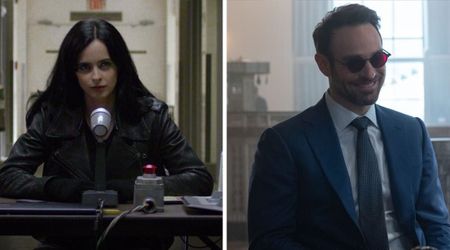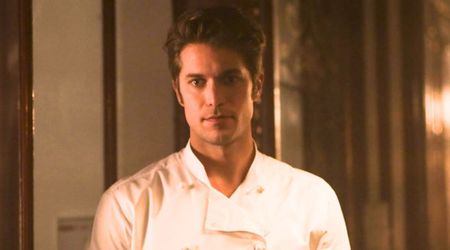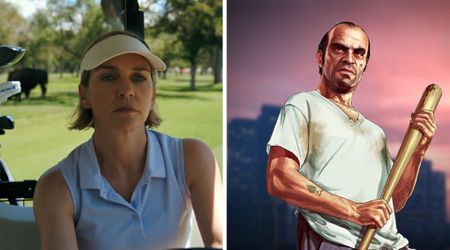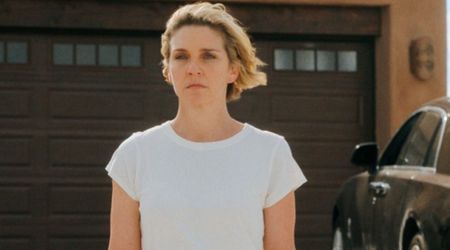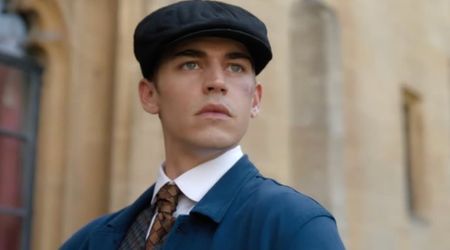10 things you did not know about Pablo Picasso, the surrealist painter who is the subject of 'Genius' season 2

Following the success and popularity of season 1 of National Geographic's anthology period drama television series, 'Genius,' which chronicled the life of Albert Einstein as he struggled through his early years, his time as a patent clerk, and his work on the theory of relativity, the show has been renewed for a second season. The second installment of the Emmy-nominated series will map out the life of Pablo Picasso, arguably the most influential artist of the 20th-century whose co-founding of the Cubist movement changed art as we knew it
'Genius: Picasso,' is practically split into two parallel timelines: one that follows him as he struggles to make his mark and find his identity as an artist, and the other that sees him recognized as the genius that he is and centered around an older Picasso caught in the throes of the Second World War that saw the Nazi occupation of Paris. With Alex Rich chosen to depict the younger Picasso and the talented Antonio Banderas portraying the older, more assured and charismatic version of the renowned painter, millions are waiting with eager expectations for the premiere of the first episode on April 25.
The second season, while so far garnering mixed reviews, will be focusing on the life of one of the most controversial and celebrated artists of our time and the muses that drove him to his genius. Picasso's work in establishing and popularizing Cubism, constructed sculpture, and collage are well-documented, but there are some facets of his life that have flown completely under the radar. Those that conspire to derive an entirely new side to the Spanish painter.
#10 The origin of his name and family direction
Born in the city of Málaga in the Andalusian region of Spain, Picasso was baptized Pablo Diego José Francisco de Paula Juan Nepomuceno María de los Remedios Cipriano de la Santísima Trinidad Martyr Patricio Clito Ruíz y Picasso, a series of names that honored various saints and relatives; the Ruiz y Picasso was included for his father, Don José Ruiz y Blasco, and mother, María Picasso y López, in accordance with Spanish law.
His early years and childhood were heavily influenced by his father, Ruiz, who specialized in naturalistic depictions of birds and other game and had worked most of his life as a professor of art at the School of Crafts and a curator at a local museum. Picasso was instructed in his initial years by his father, who as a traditional academic artist, passionately believed that proper training required disciplined copying of the masters, and drawing the human body from plaster casts and live models.
Having been born into a family who was supportive of his talents and an environment that was conducive to his growth as an artist, Picasso was primed for greatness.
#9 Early signs
There are many apocryphal stories from Picasso's early life that are used to argue that the painter's extraordinary career trajectory was destiny. One such story recounts his mother, María, stating that her son's first words were 'piz, piz,' which is a shortening of lápiz, the Spanish word for pencil. Considering that numerous pieces of historical evidence do indicate that Picasso was always a precocious and supremely-talented child, so the Apocrypha cannot be disregarded in its entirety.
Another story goes that after the family moved to A Coruña in 1891, where Ruiz became a professor at the School of Fine Arts, the then 13-year-old Picasso was found painting over an unfinished sketch of a pigeon by his father. Having observed his son's extraordinary precision, Ruiz apparently felt that he had already been surpassed as a painter and vowed to give up his art. However, the validity of that particular tale does come into question when you consider the fact that he did publish paintings in later years.
#8 Excellency in academia and a personal tragedy
In 1895, Picasso's sister, Conchita, succumbed to diphtheria. The family subsequently moved to Barcelona, where Ruiz took up a role at the School of Fine Arts, and Picasso found his reckoning as an artist. The city's cultural roots, which date back 2,000 years, and its rich heritage meant that the 14-year-old took to it almost immediately, regarding it as his true home during moments of sadness and nostalgia.
His enormous strides in education continued unabated, and his natural inclination for art showed no signs of slowing down. His father persuaded officials at the academy to allow Picasso to take an entrance exam for the advanced class, and despite the process often taking students a month, he managed to clear everything in the short span of a week. At 16, his uncle and father had him enrolled into Madrid's Real Academia de Bellas Artes de San Fernando, the country's foremost art school but Picasso rebelled against the notion of formal instruction and stopped attending classes.
#7 Influences and struggles
Picasso's distaste for rules and classical methods is well-documented. He instead preferred to spend his time roaming the streets of a vibrant Barcelona, sketching and painting the city, as well as beggars, prostitutes, and gypsies. While in Madrid, he was drawn to Museo del Prado, the main Spanish national art museum, and the paintings of Diego Velázquez, Francisco Goya, and Francisco Zurbarán. He especially admired the works of El Greco, whose elements such as elongated limbs, arresting colors, and mystic visages that Picasso would later incorporate into his paintings.
While he spent most of his adult life in France, his first trip to the country in 1901 was less than pleasant. Having been drawn to Paris because of its status as the art capital of Europe, Picasso struck a friendship with journalist and poet Max Jacob, who helped the young artist learn the country's language and literature. They shared a small room in the city but those were hard times accentuated with severe poverty, cold, and desperation and Picasso had to burn most of his works to keep themselves warm. Those memories would manifest themselves in a fierce protectiveness of his later paintings, which he went to great lengths to ensure the Nazis did not get a hold of.
#6 Co-founding a magazine
At the turn of the 20th-century, in 1901, Picasso was once again spending his time in Madrid; though he would alternate between the city, Barcelona, and Paris quite regularly. The country was in a precarious situation, having just lost the last of its non-African territories in the Philippines in the Spanish-American War in 1898, and Picasso became good friends with anarchist Francisco de Asís Soler.
The pair co-founded the magazine 'Arte Joven,' translating to 'Young Art,' and which during the brief course of its existence, ran five issues. Soler was responsible for soliciting the articles for the magazine while Picasso did the illustrations, most of which were gruesome cartoons that depicted and sympathized with the state of the poor in the country - prostitutes and beggars were frequent subjects. This period coincided with the 'Blue Period' of his art where most of his paintings were characterized by somber shades of blue and green.
#5 Rumors of thievery
On August 11, 1911, the art world was turned upside down when it was reported that the 'Mona Lisa' had been stolen from the Louvre. The burglary caused such a big uproar that the borders of France were sealed and a countrywide manhunt was put in place in the hopes that the thief could be apprehended before he got too far. With practically no clues or leads, the authorities were getting desperate and just when it seemed that all hope was lost, Joseph Géry Pieret strode forward and proclaimed he knew the identity of the thief.
Pieret claimed he had stolen several inconsequential pieces of art from the museum in the years past, producing a statue identified as an Iberian piece from the museum's exhibit of pre-Christian artifacts as proof. He said that he hawked the stolen items to poet Guillaume Apollinaire, who'd later sold them to Picasso. A 29-year-old Picasso was taken to court, where he denied having any involvement in the robbery and was acquitted because of a lack of evidence. The real thief, Vincenzo Peruggia, was apprehended in 1913 when he tried to sell the priceless piece to an art dealer.
Despite overwhelming proof suggesting the contrary, conspiracy theorists still believe Picasso was behind an elaborate plan to snatch the painting and keep it in his possession.
#4 Political views
Picasso was politically aloof in his initial years, shunning any sense of nationalism by refusing to join the army during World War I, World War II, and the Spanish Civil War. His political awakening coincided with the latter, and Picasso heavily opposed Francisco Franco's dictatorial, authoritarian, and fascist ideals and regime. 54 at the time the war erupted in 1936, Picasso released his first overtly political work in 'The Dream and Lie of Franco,' in which he expressed anger and condemnation of Franco and fascists.
His activism increased over the years, culminating in him joining the French Communist Party in 1944 and receiving the Stalin Peace Prize from the Soviet government in 1950 and the Lenin Peace Prize in 1962. He was also against the intervention of the United Nations and the United States in the Korean War, depicting his distaste in 'Massacre in Korea.'
While he was soundly criticized for his affiliation with communism, his commitment to the ideal was supposedly more sentimental than political. His feelings on the subject were best summed up by an excerpt from Jean Cocteau's diaries, in which it was written Picasso once said to him in reference to the communists: 'I have joined a family, and like all families, it's full of shit.'
#3 An 'active' family life
Picasso is often depicted as a serial womanizer and a cursory look into his personal life gives a hint to why that is. Through the course of his life, the talented painter maintained several mistresses in addition to his wife and primary partner. Ruggishly good-looking and the love-interest of several women, Picasso was married twice and fathered four children from three different women.
Two of his children, Claude and Paloma, were from his relationship with French painter, critic, and author Françoise Gilot. The other two, first son Paulo and daughter Maya, were from flings with Slavic ballet dancer Olga Khokhlova and French mistress Marie-Thérèse Walter respectively. Photographer and painter Dora Maar was also one of his more famous love interests and is remembered for documenting 'Guernica,' one of his most prominent paintings which immaculately depicted the Spanish Civil War. Tragically, whether through coincidence or a cruel twist of fate, two of the six prominent women in his life - Marie-Thérèse and second wife Jacqueline Roque - went mad and committed suicide.
#2 A man of many talents
While Picasso was a supremely talented painter, he was no dilettante at poetry either. In the 1930s, he took to it as an alternative outlet, writing over 300 poems between 1935-1939. Most of them were untitled, except for a date and sometimes the location of where it was written, and were commonly punctuation-less, gustatory, erotic, and scatological (one of the lines of his poems read: 'the smell of bread crusts marinating in urine').
Picasso also wrote two full-length surrealist plays, 'Desire Caught by the Tail,' and 'The Four Little Girls,' in 1941 and 1949 respectively. The former got its first audience in 1944 when it was given a reading in the Paris apartment of French surrealist writer and ethnographer Michel Leiris. Directed by Albert Camus, some of the prominent names at the reading included local literati as Simone de Beauvoir, Jean-Paul Sartre, Valentine Hugo, Raymond Queneau and Picasso himself.
Picasso once reportedly predicted that he would be more famous for his poems than his paintings. In hindsight, he would probably be glad that that particular prediction did not come to fruition.
#1 A recognition of his genius
While he was highly-regarded even during his time, it was after his death that the general populace truly appreciated his ground-breaking work and surrealistic, cubist approach. As a consequence, several of his paintings now rank amongst the most expensive ones ever auctioned and sold. 'Garçon à la pipe,' painted in 1905 when he was just 24-years-old, sold for US$104 million at Sotheby's in 2004; 'Dora Maar au Chat' sold for US$95.2 million at Sotheby's in 2006; 'Nude, Green Leaves and Bust' was sold at Christie's for $106.5 million in 2010.
But what could possibly be a greater testament to his genius than having one of his paintings become the most expensive in human history? While Leonardo Da Vinci's 'Salvator Mundi' is currently the world's most expensive painting and was sold for an eye-watering $450 million in November 2017, that honor previously went to Picasso's 'Les Femmes d'Alger (Version O),' which had attracted a bid of $179.3 million at Christie's in 2015.

